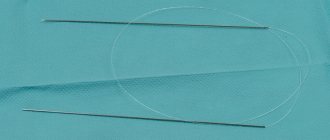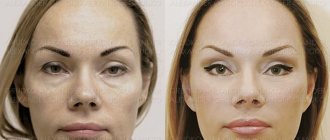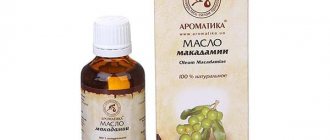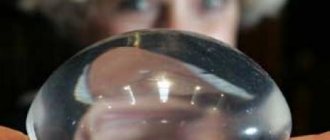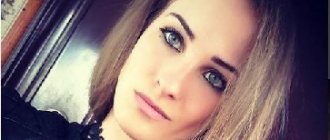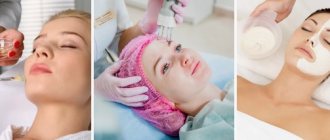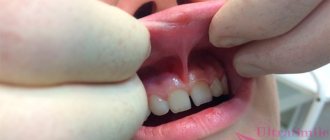How does Botox work?
In pharmacology, Botox is a local muscle relaxant that temporarily blocks neuromuscular connections.
I will not go deep into the description of the biochemical processes during the administration of Botox, but I will try to explain it in understandable language.
Let me start with the fact that all facial muscles on the face are connected to the skin at both ends. These are the only muscles in the human body with this form of attachment, which provides us with mobility of the skin on our face. Each muscle has a parallel antagonist muscle, i.e. if one muscle raises the eyebrow, then the antagonist muscle lowers it. This means that the position of the eyebrows at rest depends on the opposition of these two muscles.
Let's look at an example: if you tie two rubber bands to a pencil and stretch them so that the pencil is in the middle. If you pull one rubber band, the pencil will move in its direction; if you pull the other, the pencil will naturally follow the second rubber band. The same thing happens with the eyebrow muscles.
Now imagine that we take one rubber band and cut it a little. This will weaken it, the antagonistic eraser will pull the pencil. This is how it works with Botox: when it hits one muscle, it relaxes it, and accordingly, the antagonist tightens and eliminates wrinkles.
Possible complications: symptoms and consequences management
A change in skin color immediately after filler injection indicates vascular ischemia. Symptoms of arterial or venous occlusion, which can lead to skin necrosis, include discoloration or darkening of the skin (to a blue-gray hue), ecchymosis, reticular erythema, and severe pain at the injection site.
In cases of vascular occlusion or ensuing necrosis, the main goal is to stimulate blood flow in the affected area.
Principles of emergency care for vascular occlusion
- immediate application of a warm compress,
- massage the affected area to dilate blood vessels and disperse the injected drug,
- taking aspirin,
- the use of external drugs that stimulate vasodilation,
- injection of hyaluronidase (in case of injection of hyaluronic acid fillers),
- injection of corticosteroids (anti-inflammatory/immunomodulatory),
- taking antibiotics,
- taking antiviral drugs (in case of threat of necrosis in the perioral area).
It is also possible to use hyperbaric oxygen therapy and laser procedures 3 months after the injection of the filler.
Cases of retinal artery occlusion are extremely rare and very dangerous. Symptoms of possible vision loss are sharp pain in the area of the affected eye immediately after filler injection, blurred vision, ptosis, headache, dizziness, nausea, and ophthalmoplegia.
Dublin protocol for the treatment of complications after filler injection.
Usually, in the case of retinal artery occlusion, vision loss is irreversible. The best way to prevent this extremely undesirable phenomenon is to avoid dangerous areas when injecting fillers, especially in the area of the glabella, forehead and upper part of the nasolabial folds.
After Botox injection
A question about sensations and visual changes.
During the procedure, most clients feel some movement or burning. That's all, nothing happens right away. Botox begins to act only after 1-2 days; doctors say it “gains strength.” On the second day after the injection, many clients feel as if a cake was “glued to their forehead.” But it goes away on the 3rd or 4th day; as a rule, you won’t feel anything else.
However, now, after the procedure, when it seems to you that you are wrinkling your forehead or squinting, in fact nothing will be reflected in your facial expressions.
Some patients don't like this for obvious reasons. “Doctor, I’m like a mummy, I want a living face!” - many say, but, dear clients, the choice is yours: either a live face with wrinkles, or slightly “frozen” facial expressions on the area of the face where the injection was made.
I will say one thing that there are specialists who have long experience in Botox correction. They are able to calculate the dosage so accurately that, despite the elimination of wrinkles, facial expressions are preserved.
How to take care of your facial skin after surgery
Rehabilitation consists not only of restrictions, but also of mandatory care measures:
- to distribute the drug, you need to perform facial exercises for the first two hours;
- to heal punctures and as protection against infection, the skin should not be washed for a couple of days, but wiped with a chlorhexidine solution;
- short-term use of cool compresses will help relieve swelling;
- to speed up the recovery process, puncture sites can be lubricated with Bepanten and Panthenol creams;
- you need to moisten and saturate the skin, but do not use warming masks.
Most popular: Peeling for the bride PQ AGE - results after the first use
Alternative Methods
Not all women trust Botox procedures, so they strive to find other effective methods for facial rejuvenation. Oddly enough, it can be used instead of Botox. In addition, there are operations to restore the elasticity, freshness, and structure of facial skin. Let's look at the most famous of them:
- Thermage involves treating the deep layers of the skin to improve collagen production. The procedure fights wrinkles and is also used to tighten the skin;
- Mesotherapy, biorevitalization. Subcutaneous administration of vitamin cocktails and substances based on hyaluronic acid. Perfectly destroys facial wrinkles;
- Carboxytherapy consists of subcutaneous injection of CO2, which perfectly tightens the skin and significantly evens out the most serious wrinkles;
- Botulinum-containing creams are not so effective, but they help when the patient is afraid of injections.
It is worth noting that in order to achieve results, several techniques must be combined. For example, injections of botulinum toxins with biorevitalization and carboxytherapy provide a rejuvenating effect and protect against drooping eyelids.
Side effects of Botox
The procedure, done according to all the rules and observing all technologies, takes place without complications.
Considered: • Choice of injection site
• Depth of drug administration
• Accurate dosage calculation
But the patient is always warned that small hematomas may form at the injection site and slight swelling may occur. All side effects go away within a day (I was lying here, the swelling goes away, but if the doctor gets into the vessel, the bruise can last for a month, this is acceptable).
There is also such an effect as overhanging the brow ridge, i.e. ptosis (drooping). This effect is usually easy to eliminate.
In any case, before starting the procedure, you must sign a consent form, where everything is described in detail. Here is a standard consent form:
Now let's look at the places where Botox is injected and for what purpose
Botox eyelids (Botox injections into the eyelid area)
It happens that the anatomy of the eyelids and the shape of the eyes allows you to slightly raise the drooping upper eyelids.
But the mechanism itself is aimed directly at eyebrow lifting. When raised, the eyelids rise accordingly, but this is a very rare case. Want to check it out for yourself? Go to the mirror, place your index finger just above the center of your eyebrow and forcefully pull it up. Look, does your eyelid rise? If the eyelid is standing, then lifting the upper eyelid is impossible with Botox. If the eyelid opens, then you can try, but don’t forget about the eyebrow. It can be raised to an “indecent” height, so it’s up to you to decide: either the eyelid or the eyebrow.
Botox in nasolabial folds and lips
Botox is not done in nasolabial folds and lips - this is a myth!
Forehead Botox (Botox injections into the forehead area)
The main place on the face that can be corrected with Botox is horizontal forehead wrinkles.
In practice, this is the first signal of the presence of ptosis of the soft tissues of the face. But often, with active facial expressions, wrinkles appear at a fairly young age, which is why it is not uncommon for fairly young people to seek the procedure just to fix the immobility of the forehead. The injection line of the drug always passes between the wrinkles. At the same time, the doctor’s task is not only to eliminate wrinkles, but also to maintain facial expressions.
Brow Botox (Botox injection into the brow area)
Folds formed when frowning and vertical wrinkles when at rest are the main two problems in the eyebrow area. A Botox injection in this area either removes a wrinkle or fixes this area from frowning and gives some lifting to the eyebrows. Some patients experience a disappearance of spasmodic headaches.
Eyes (Botox injections against wrinkles under the eyes).
The anatomical structure in this area does not allow correction with Botulinum toxin. Such correction is carried out extremely rarely, only when correcting wrinkles at the corner of the eye (crow's feet), and this area is slightly corrected.
Proper preparation for injections
Before performing any cosmetic procedure, specific recommendations should be followed. Therefore, we highlight several important stages:
- The client must first go to a consultation and discuss together which places he wants to correct and whether it is worth having surgery at all. During the conversation with the doctor, you should talk about your state of health;
- Four days before surgery, it is forbidden to use medications, especially antibiotics, so as not to interfere with normal blood clotting. Also during this time you should temporarily give up sports activities, excessive exercise, and alcohol. All of the above can also lead to rapid blood flow and, as a result, after the injection, the liquid will not be able to flow evenly;
- To maintain facial skin tone, you need to repeat the procedure once every six months.
Most popular: Review of budget skincare cosmetics from the Diademine line
The day before the scheduled operation it is prohibited:
- Drinking alcohol.
- Any exercises with bending.
- Massage is contraindicated.
Please note that Botox injections and antibiotics are combined but have a big impact. For example, one medicine can sharply reduce the results of injections, while others, on the contrary, increase them.
Optimal age
The question is at what age are cosmetic procedures for facial rejuvenation allowed? Four age categories can be distinguished:
- Up to 20 years old. Use of injections from 18 years of age. However, it is very rare that wrinkles or creases appear at this age;
- From 20 to 30 years. A chance to get rid of the harmful habit of squinting your eyes, and, therefore, delay the appearance of fresh wrinkles;
- From 30 to 55 years. Wrinkles and age-related changes are noticeable, and injection can eliminate and avoid the appearance of new wrinkles;
- From 55 and older. Surgery is not recommended. Women will not get the expected result, because at this age they need to seek the services of a surgeon.
Complications after the procedure
Negative results after injections appear due to the doctor’s unprofessionalism. In this regard, it is preferable to carry out the operation in a trusted hospital, with a renowned professional. Common mistakes made by medical workers:
Diluting a substance in the wrong ratio means blocking muscle activity or, on the contrary, a lack of results. In case of overdose, the excess amount of the drug should be eliminated. If, on the contrary, the dosage is less than the required dose, the drug can always be added.
Injecting medication into an area not intended for adjustment. As a result, asymmetry or drooping of the upper eyelids will appear. It is difficult to eliminate such phenomena, so you just need to wait a couple of months until the product is completely removed. You can reduce the effect of the element by massaging the injection area, as well as washing with warm water. When a client does not follow the doctor's advice during recovery, there is a possibility of complications or short-term exposure to the substance.
Reasons why there is no effect
Botox injections are considered a non-hazardous method of facial correction. After the procedure, allergies, necrosis and tissue suppuration do not appear. Botulinum toxin is a toxic substance, but in order for it to have a negative effect on the body, a huge amount of the drug must be administered, 30 times higher than the usual concentration.
Why is sometimes the client dissatisfied with the result after surgery? The prerequisites for dissatisfaction are different: no result, excessive action in the form of a “frozen face,” or pronounced negative changes. A mask on the face may appear due to too much Botox, or if the substance is injected deeply.
This effect is manifested by frequent repeated injections, as the muscles become exhausted over time. If the result is categorically unsatisfactory, the effect of the drug can be neutralized with the help of antibiotics, but only after consulting a doctor.
Eliminating wrinkles with Botox
Correction of a gummy smile with botulinum toxin
Dysport horizontal forehead wrinkles
Dysport glabellar area
Dysport horizontal forehead wrinkles
Dysport wrinkles around the eyes (crow's feet)
Botox wrinkles around the eyes Botox horizontal forehead wrinkles
Botox between the eyebrows
Drooping corners of the mouth.
It is recommended to carry out this procedure before contouring in this area to enhance and lengthen the effect.
Gummy smile.
A smile during which the upper gum is excessively exposed is very amenable to treatment with botulinum toxin. During this procedure, the depth of the nasolabial fold is reduced.
Neck wrinkles (needles and Botox injections in the neck area).
The large neck muscle, platysma, forms vertical cords that lead to sagging skin under the chin, on the cheeks, as well as the appearance of horizontal neck wrinkles. Blocking this muscle relieves tension and significantly improves appearance.
Hyperhidrosis
This is increased sweating. Treatment of this condition with Botox or Dysport is very effective. The result lasts about 1 year. Read more about hyperhidrosis in the section “Sweating Treatment.”
Botox in the corners of the lips
The effect of this procedure is very striking. But the difficulty is that the doctor must feel the depth of drug administration. Therefore, all doctors treat such correction with caution, therefore the minimum dose is administered and shallowly. It makes sense only as a preliminary procedure before contouring in order to increase the duration of the effect.
Step-by-step instructions for use
Types of drugs
Now there is a large selection of drugs with botulinum toxin on the market, but there are several that are most popular among cosmetologists.
- Botox (Botox) - all drugs containing botulinum toxin are commonly called by its name, this drug is produced in the USA, the bottle contains 50-100 units (units) for dilution.
- Dysport , produced by Ipsen Biopharm, UK. Sold in bottles containing 300 and 500 units of botulinum toxin.
- Xeomin , made in Germany, containing 100 units of active ingredient per bottle.
Dosage
Botox is measured not in milliliters, but in units of action or simply in units. The price of one injection is determined based on the units injected into a particular area .
Based on the thickness of the skin in a certain area, fewer or more units of Botox are needed.
To eliminate horizontal lip folds, 14 to 24 units are required, for the upper lip, as we wrote above in the diagram - 2-4 units, the eyebrow fold requires 24-30 units - since it is deep. Based on the number of units, you can determine the price for the procedure that is required.
We suggest watching a video about the correct dosage of the drug:
How and with what?
Botox is diluted with sodium chlorine emulsion for injection, concentration 0.9%, the stopper with sodium chlorine is pierced with a needle, after treating it with alcohol, the required amount is injected into the container with Botox. The amount of saline solution is calculated based on the desired concentration of Botox (depending on the location of the procedure).
We invite you to watch a video about the principle of diluting botulinum toxin:
Needling procedure
Botox is administered subcutaneously or intradermally, depending on the injection site. The difference between these two methods is described by their names - Botox is injected either into the skin or into the muscle that is located under the skin . The needles used are not large, often insulin, because of this the puncture is practically not felt.
We invite you to watch a video about how the botulinum toxin injection procedure takes place:
Botox contraindications
• increased individual sensitivity to the toxin,
• some infectious and viral diseases (acute infectious diseases, exacerbation of herpes, etc.), inflammatory process at the site of the proposed Botox injection,
• myasthenia gravis (or similar syndromes)
• hemophilia
• during pregnancy and breastfeeding – the consequences can be very negative
• preparing for the birth of a baby - doctors do not recommend using Botox at this moment; the contraindications are quite serious.
• Botox can also have bad consequences when combining the procedure and taking antibiotics, anticoagulants, Relanium or NSAIDs.
Anatomical structure of the face
The most serious complications after injection of fillers include:
- unilateral or bilateral visual impairment or blindness;
- skin necrosis;
- cerebrovascular disorders.
- Dermal fillers that are most often associated with complications include hyaluronic acid, calcium hydroxyapatite, polymethyl methacrylate, polylactic acid, silicone and adipose tissue.
The key to understanding the causes of various complications after filler injection is a good knowledge of the structure of the facial vascular system. In general terms, the anatomical structure of the human face can be divided into 5 layers:
- Skin (epidermis and dermis)
- Subcutaneous fat deposits
- Facial muscles and SMAS
- Blood vessel system
- Scull
You should also take into account all procedures and surgeries that the patient has undergone previously, since they could affect the anatomical structure of the face and be a factor in the increased risk of undesirable consequences of the injection of fillers.
Recommendations after Botox
After a Botox injection, it is recommended not to undergo any thermal procedures.
I’ll answer why: when exposed to high temperature, the effect of Botox is neutralized, i.e. a “sterilization” effect occurs. Therefore, you don’t have to wait for the effect of its use! You should also not drink alcohol, since alcohol, roughly speaking, “washes off” Botox.
Now about the myths. Many doctors recommend not eating chicken meat and eggs, explaining that the bird is stuffed with antibiotics, and the antibiotic also neutralizes Botox. There probably is some meaning to this.
How to inject with excessive sweating?
In this case, the area of influence is outlined after the iodine-starch test. First, the excessively sweating area is treated with Lugol's solution, then sprinkled with starch. Where intense blue coloring is visible, marks with a diameter of 1-1.5 cm are placed into which injections will be made. This way you can get rid of sweating of the feet, palms, and armpits for as long as 7-8 months (the second and subsequent times - for a longer period).
Recommended reading
- Contraindications and consequences of Botox injections - rules for the rehabilitation period.
- What is better: Xeomin or Botox - the latest achievement in pharmaceuticals or a drug proven by many years of practice?
- Botox for sweat: how effective is it?
- Botox: pros and cons of the most popular anti-aging procedure
Botox - consequences
In the short term, no consequences were observed.
And in the long term, there is an opinion that after using Botox for 10-15 years, the muscles sag and form “pockets”, but this is still an unproven opinion. - swelling after Botox, Botox swelling
This happens sometimes, and it is written in the consent you sign. But there is no need to worry. Firstly, the swelling is not very noticeable, and secondly, it goes away within 1-2 days.
- how to remove Botox, how to get rid of Botox
As a rule, Botox is neutralized quite quickly and effectively. 1-2 tablets of a broad-spectrum antibiotic are enough. Therefore, for those who do not like the effect of Botox, I would advise not to panic, but to contact your doctor.
What is a unit
Those who are already familiar with beauty injections know that the cost of the procedure directly depends on the volume of the drug used. And it is calculated in conventional units. This is a universal international designation that allows you to correctly calculate the dosage.
One unit is a dose of type A neurotoxin that, when administered, kills 50% of a population of laboratory mice. Naturally, it is relatively safe for humans. But it is also not enough to get the desired result.
What is a unit
Those who are already familiar with beauty injections know that the cost of the procedure directly depends on the volume of the drug used. And it is calculated in conventional units. This is a universal international designation that allows you to correctly calculate the dosage.
One unit is a dose of type A neurotoxin that, when administered, kills 50% of a population of laboratory mice. Naturally, it is relatively safe for humans. But it is also not enough to get the desired result.
